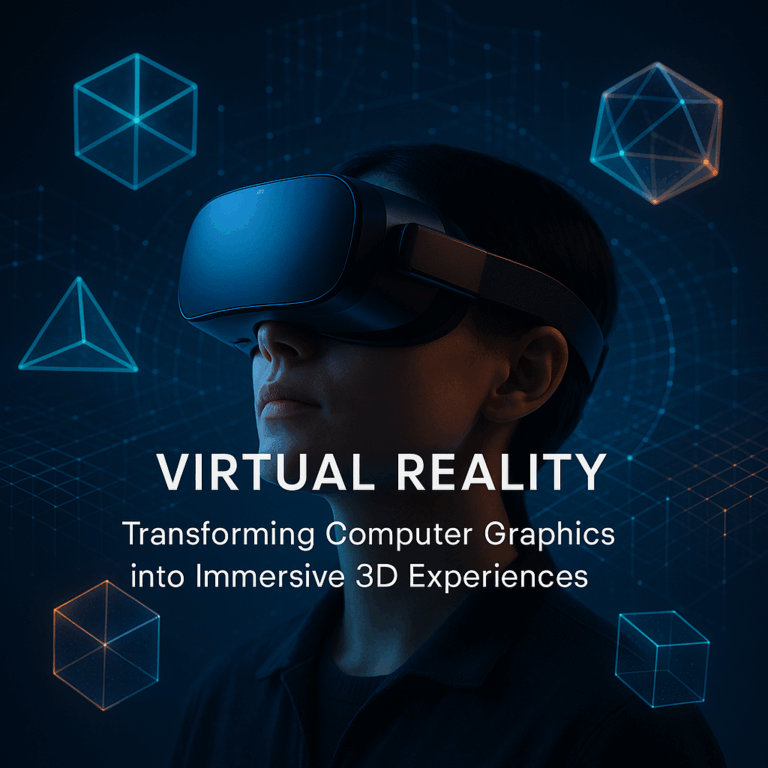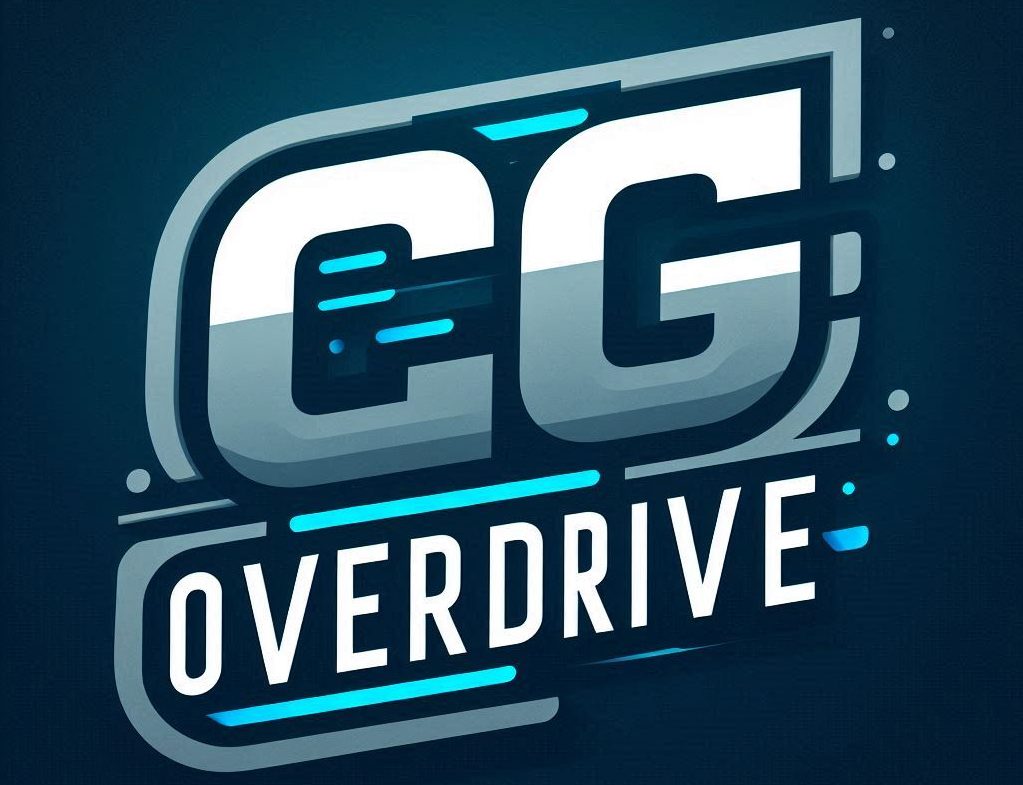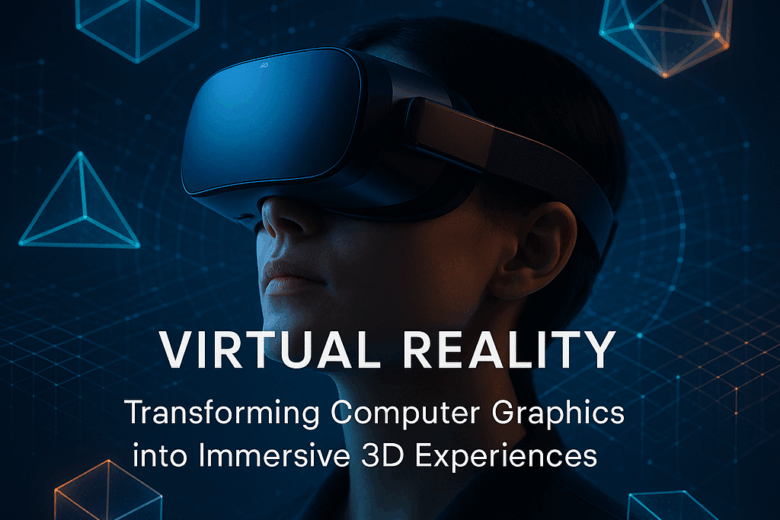Virtual Reality: Revolutionizing the Computer Graphics Landscape
Virtual Reality (VR) stands at the forefront of groundbreaking innovation within the computer graphics (CG) industry, reshaping how creators design, users experience, and storytellers narrate. Unlike conventional flat-screen media, VR immerses the user into richly detailed, interactive 3D environments, enabling a profound connection with digital content. Its significance lies not only in entertainment and gaming but also across sectors such as education, healthcare, and architecture — all leveraging CG to craft convincing, tangible experiences.
Harnessing VR’s full potential demands a specialized approach within computer graphics, blending advanced rendering techniques with real-time responsiveness. Understanding these technical facets unlocks VR’s transformative power, offering both industry professionals and enthusiasts a gateway to innovate and captivate.
Core Components Shaping VR’s Visual Excellence
To build impactful VR experiences, CG specialists must master several foundational pillars:
| Component | Purpose | Key Considerations |
|———————–|—————————————————–|————————————————-|
| Stereoscopic Rendering| Creates double images for each eye to simulate depth| Accurate IPD (interpupillary distance) settings|
| Real-time Rendering | Ensures fluid interaction within high-fidelity scenes| Low latency, high frame rates (90+ FPS) required|
| Spatial Audio Design | Adds aural realism matching spatial cues | 3D sound positioning aligned with visuals |
| Motion Tracking | Captures user movements for immersive responses | Precision sensors and minimal drift |
| High-Resolution Displays| Reduces screen-door effect and enhances realism | OLED/LED panels with high pixel density |
Each component demands meticulous coordination with CG pipelines. For instance, stereoscopic rendering requires dual-camera systems in 3D software, dynamically generating two offset views. Motion tracking feeds real-time positional data into rendering engines, directing camera angles to match head and hand movements instantly.
Optimizing Computer Graphics for VR Performance

VR’s promise of presence hits a wall when graphical fidelity and performance fall short. Visual artifacts, stuttering, or lag break immersion and cause discomfort. Therefore, optimizing computer graphics workflows is paramount.
Key optimization strategies:
– **Level of Detail (LOD) Management**
Utilize multiple mesh resolutions that load depending on proximity to the user. This conserves GPU resources by prioritizing detail only where needed.
– **Foveated Rendering**
Employ eye-tracking to render high resolution only at the user’s gaze point; peripheral visuals remain lower resolution, dramatically reducing rendering load.
– **Efficient Shader Design**
Design shaders that balance visual quality with computational cost. Avoid complex computations where simpler approximations suffice.
– **Advanced Culling Techniques**
Implement frustum, occlusion, and backface culling to discard unseen objects, saving rendering cycles.
– **Asynchronous Time Warp (ATW)**
A technique that warps the last rendered frame based on latest head position data, masking latency between rendering and display refresh.
Incorporating these tactics enables VR applications to maintain the fluidity essential to VR comfort and realism without sacrificing visual richness.
Innovative Computer Graphics Technologies Empowering VR
As VR matures, several emerging CG technologies catalyze next-level experiences:
– **Physically-Based Rendering (PBR)**
Accurate simulation of light-material interactions enhances realism and material diversity, critical for believable environments.
– **Volumetric Rendering**
Displays 3D volumetric data like smoke, fog, or even holographic representations, intensifying immersion.
– **Procedural Content Generation**
Algorithms dynamically generate textures, geometry, or entire worlds, providing endless unique environments without manual artist intervention.
– **Neural Rendering & AI Integration**
Deep learning accelerates rendering processes and enables style transfer, super-resolution, or content adaptation on the fly.
– **Haptics and Multisensory Feedback**
Beyond visuals, synchronized tactile feedback boosts presence, blending CG with physical stimuli.
These technologies, woven seamlessly into VR pipelines, challenge traditional static CG paradigms, opening creative frontiers for developers.
Practical Advice for CG Artists Entering VR Development
Success in VR CG demands a blend of technical acuity and creative flexibility. Here are essential guidelines for artists transitioning into VR:
– **Focus on User Comfort**
Always prioritize frame rate stability and low latency. Testing with actual VR hardware repeatedly identifies and mitigates motion sickness risks.
– **Master VR-Specific Tools**
Familiarize yourself with engines like Unity and Unreal, both offering native VR support and specialized plugins for spatial rendering and input management.
– **Design Intuitive User Interfaces (UI)**
VR UI design defies 2D conventions — interfaces must be spatial, gesture-friendly, and minimize cognitive load.
– **Collaborate Across Disciplines**
Work closely with engineers, sound designers, and UX experts to craft cohesive multisensory experiences.
– **Iterate Rapidly with Prototyping**
Deploy quick mockups to gather user feedback, refining interaction and visual elements early.
– **Keep Hardware Constraints in Mind**
Different headsets vary in display resolution, processing power, and tracking fidelity—optimize accordingly.
Emerging VR Applications Transforming the CG Industry
VR’s rapid adoption has precipitated complex CG demands across diverse fields:
– **Gaming**
Offers unprecedented immersion, challenging developers to create expansive, richly detailed worlds balanced with optimal performance. VR gaming pushes CG artists to innovate narrative delivery and interaction models.
– **Virtual Production**
Combines VR with real-time CG in filmmaking, allowing directors to visualize digital scenes live on set, revolutionizing Visual Effects workflows.
– **Architectural Visualization**
Enables interactive walkthroughs of CG models, helping clients intuitively explore spaces before construction.
– **Medical Training & Therapy**
Uses immersive simulations for skill development and rehabilitation, relying heavily on accuracy and realism in CG anatomy and environments.
– **Education & Cultural Preservation**
Transports users to historical sites or inside microscopic worlds with visually rich, interactive CG storytelling.
Each use case pushes the boundaries of what computer graphics can achieve within VR ecosystems, challenging artists and engineers to evolve continually.
Comparison of VR Headset Technologies Impacting CG Development
| Feature | Tethered Headsets | Standalone Headsets | Passthrough/AR Hybrid Devices |
|————————|———————————-|———————————–|—————————————-|
| Processing Power | High (PC/Console dependent) | Moderate (Onboard SOC) | Moderate to Low |
| Visual Fidelity | Highest resolutions & frame rates | Balanced for mobile hardware | Mixed reality overlays |
| Tracking Accuracy | External sensors or inside-out | Inside-out sensors | Inside-out combined with environmental mapping |
| Development Complexity | Complex builds for compatibility | Optimized for constrained hardware| Requires integration of CG and real-world inputs |
| Use Cases | AAA gaming, simulations, production| Casual gaming, education, training| Mixed reality apps, design, and visualizations |
Understanding these platforms influences how CG assets are optimized, rendered, and delivered to ensure peak VR experiences.
Empowering the Next Generation of VR Creators
The VR revolution redefines storytelling and interaction paradigms, carving new niches in computer graphics. As artists and developers, embracing VR means continuously pushing technical boundaries and rethinking design principles for immersive media.
For aspiring VR CG creators:
– Download open-source VR projects to learn hands-on workflows.
– Experiment with mixed reality capture to combine real and virtual worlds.
– Engage with VR developer communities for collaboration and knowledge exchange.
– Pursue training in shader programming, 3D modeling tailored to VR, and real-time engine optimization.
– Stay abreast of emerging hardware to anticipate shifts in performance and usability demands.
“In VR, the line between imagination and reality vanishes,” encapsulates the pioneering spirit animating this evolution. Through mastery of computer graphics and committed innovation, creators can craft transformative experiences that captivate and inspire a global audience.
Virtual Reality is no longer a futuristic concept—it is the immersive canvas reshaping the present and future of computer graphics and storytelling.

